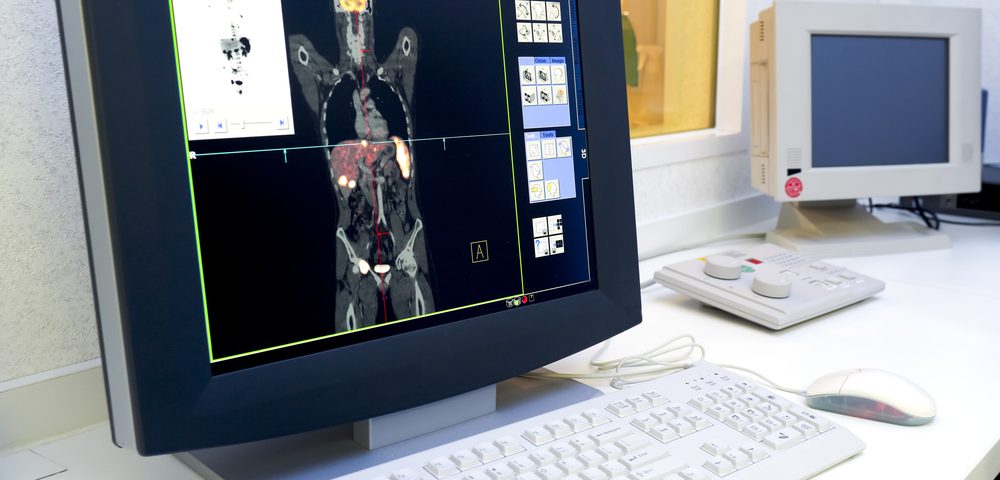A new imaging agent may hold promise in detecting both early prostate cancer and metastasis using PET/CT scans, according to data from a first-in-human trial.
The agent, a radiolabeled dual-receptor, was shown to effectively track cancer cells, and have the potential to improve prostate cancer diagnosis and guide treatment decisions.
The study, “Clinical Translation Of A Dual Integrin αvβ3 And GRPR Targeting PET Radiotracer 68Ga-BBN-RGD,” was published in the Journal of Nuclear Medicine.
“Although treatable at the early stage, prostate cancer is prone to metastasis,” Xiaoyuan Chen, the study’s senior author, said in a news release. “An effective and specific imaging method of detecting both primary and metastatic lesions is thus of critical importance to manage patients with prostate cancer.”
Researchers followed 13 men with prostate cancer (four new cases and nine post-therapy patients) and five healthy individuals to test the efficacy and safety of a compound called Ga-68-BBN-RGD.
This agent is able to bind GRPR and integrin αvβ3 proteins, both of which are biomarkers of prostate cancer. The targeting of both proteins has the advantage of allowing tumor contrast when either or both biomarkers are present.
“Compounds capable of targeting more than one biomarker have the ability of binding to both early and metastatic stages of prostate cancer, creating the possibility for a more prompt and accurate diagnostic profile for both primary and the metastatic tumors,” Chen said.
Participants underwent PET/CT scans 15 to 30 minutes after intravenous injection of Ga-68-BBN-RGD, and again two weeks later.
Results indicated that Ga-68-BBN-RGD helped detect 20 bone lesions in seven patients, both those newly diagnosed patients and those with cancer recurrence after treatment. These lesions were not necessarily associated with increased levels of prostate specific antigen (PSA).
“In 13 patients with prostate cancer diagnosed by biopsy, 68Ga-BBN-RGD PET/CT detected 3 of 4 primary tumors, 14 metastatic lymph nodes, and 20 bone lesions,” the researchers wrote.
No reports of adverse side effects were associated with the procedure or at its two-week follow-up, suggesting Ga-68-BBN-RGD use is safe.
Although more research is needed to validate these findings, the researchers believes that Ga-68-BBN-RGD can become an important tool to detect prostate cancer and help guide its staging and treatment decisions, like the need for internal radiation therapy.
According to the American Cancer Society, more than 161,000 new diagnoses of prostate cancer are expected in the U.S. alone in 2017.

